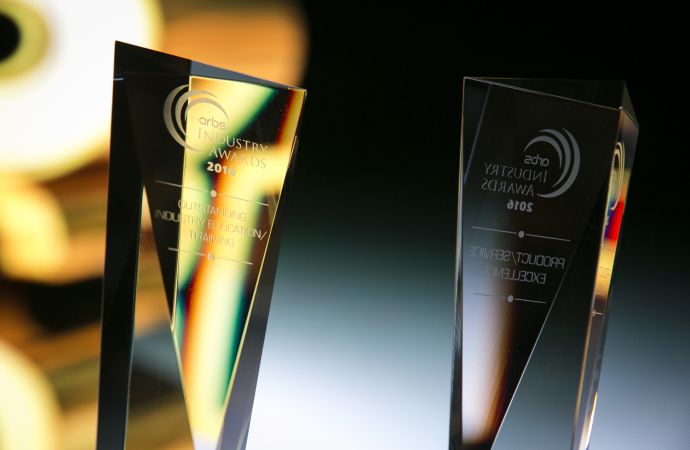In the follow-up to his first guest column for Accelerate America, experienced refrigeration executive Jim Knudsen considers energy efficiency, the growing costs of HFC systems, and the impact of regulations in the September edition.

The fun and excitement associated with using naturally occurring substances such as CO2 and hydrocarbons as refrigerants are over. There are literally thousands of natural-refrigerant systems generating cold every day.
As usage of these systems expands due to concerns over the environment, and regulatory action, it is time to look at their financial justification or return on investment (ROI). In this article I will look at the issues that arise in evaluating the ROI for natural-refrigerant systems in food retail applications, using CO2 transcritical systems as the main reference point.
ROI definition
The analysis of ROI can vary from organisation to organisation based on policy, available capital, and overall strategy. I will not address detailed technical issues such as lifecycle, payback period, tax treatment, and amortisation but instead the simplest basis for determining ROI, which is comparing the total cost to implement with the returns generated.
The returns in this analysis are revenues and profits generated by retail sales. It is easy to assume that the retail sales over the evaluation period would not be overly impacted by the choice of the refrigeration system. Not so fast; considering that many retailers highlight their environmental stewardship in promotional and branding messages, there is a clear expectation that environmental awareness may drive shopping decisions for a segment of consumers.
Quantifying this factor for refrigeration systems compared to the plethora of other environmental programs may be difficult, but it should not be ignored. There is a clear risk that actions contrary to stated environmental goals may result in a backlash. Retail organisations have already been accused of “green-washing” in the press. I believe that if an organisation that serves the public claims environmental responsibility, they should factor in the value of a refrigeration strategy consistent with this message.
On the investment side, the discussion comes down to total cost of ownership, with consideration for future trends, ongoing costs, and potential risks associated with regulatory and enforcement changes.
Adressing higher initial costs
The big elephant in the room is that CO2 commercial refrigeration systems are more expensive than traditional HFC systems, especially in the United States. In a recent presentation at ATMOsphere America 2015, the equipment cost of a CO2 transcritical system was shown to be nearly twice that of comparable HFC systems. This is not an unusual situation, but as the number of systems increases, the premium is expected to fall. In fact, similar numbers published in Europe show a much smaller difference, more like 30% to 50%.
The reasons for this are many:
- The greater penetration of these systems in Europe has resulted in a maturing of the market and the moderation of pricing, including installation/service and component costs.
- In general, energy-saving technologies such as electronic expansion valves, case controllers, and variable speed drives are widely used in conventional systems in Europe while they are often considered part of the premium for CO2 systems in North America.
- The European market has been driven by an aggressive approach to environmental regulation, increasingly pushing refrigerant pricing for HFCs increasingly higher.
Energy: an overwhelming cost
The most critical factor in the entire analysis is energy cost. The cost of energy in the operation of commercial refrigeration systems represents 75% to 85% of the total cost of ownership, depending on the price of electricity and the life of the equipment.
In addition, energy in conventional HFC systems accounts for approximately half of the environmental impact. As such, the cost of energy represents as much as 10 times the initial cost of the system. Put simply, a 10% reduction in energy can offset a 100% increase in the initial cost of the system.
Recently, Accelerate America reported that a retail CO2 transcritical system operating at a Sprouts store near Atlanta, where the warmer climate makes these systems less efficient, was more than 6% more efficient than comparable HFC systems. With energy such an overwhelming factor, any technology that saves energy should be strongly considered.
Currently, maintenance and repair costs can represent a premium cost for CO2 systems. This is largely due to the lack of familiarity with these systems by U.S. service organisations. In Europe these costs are similar to those of HFC systems, and it is reasonable to expect that this will be the case in the U.S. as the market matures.
Refrigerant is - and will continue to be - a high cost for HFC systems. As regulatory efforts continue to limit their production (closely paralleling HCFCs) the cost of these refrigerants can be expected to rise significantly. The cost of R-22, for example, has increased by a factor of 10 as its production has been phased out.
By contrast, the ongoing cost of maintaining natural-refrigerant systems will continue to fall as more trained technicians gain experience and the sense of ‘unknown’ and risks are factored out of the pricing.
Putting this all together, it is reasonable to assume that the increase in HFC-related operating costs will more than offset the time-value of the initial investment in natural-refrigerant systems.
Regulatory costs and risk factors: Out with the old, in with the new
No matter who wins next year’s election, we can expect a continued trend toward regulation of chemical refrigerants. While the cost of this may be difficult to estimate, it is a real cost. Already some retailers have seen substantial fines related to refrigeration leaks and venting of controlled refrigerants. For natural-refrigerant systems, regulatory risk is expected to be a much smaller issue; this technology can be described as “future-proof”.
How to factor the “risk premium” into the ROI calculation is up to every organisation to decide. It is difficult to measure; fees, fines, and negative publicity can be very costly, but it is unclear how likely they are to occur.
Considering all of the above factors, a natural refrigeration system - in particular, a CO2 transritical system - can compete very effectively for investment dollars in today’s environment. The decision is clear. Now is the time to rethink our investment strategy. Want to save some green? Choose natural refrigerants.
Jim Knudsen, who lives in Columbus, Georgia, is an experienced refrigeration executive, specialising in global marketing, business development and product strategy. He is the holder of five U.S. patents. His Strategic Leadership Blog is located at: www.jamesknudsen.com
MORE INFORMATION
Related stories



